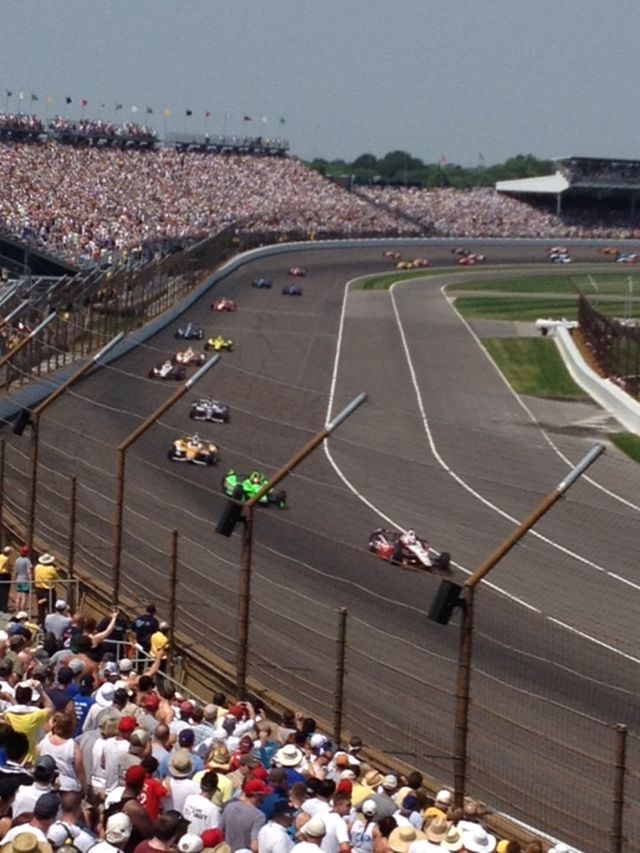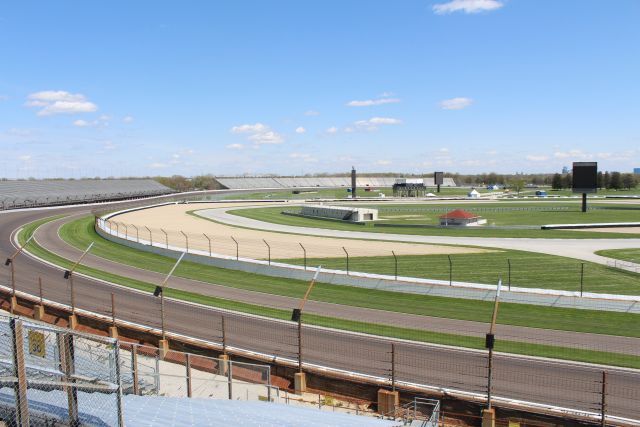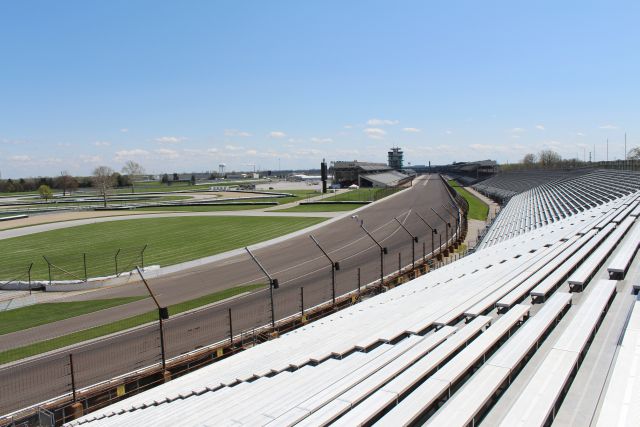IMS Radio Network: Behind the mic
IndyCar, IndyCar commentary — By Chad on May 23, 2013 8:02 pmYou know the names, the voices, and even some of the faces of the Indianapolis Motor Speedway Radio Network crew. Their voices are etched into our brains and are synonymous with IndyCar and the Greatest Spectacle in Racing. And they’ve all seen some of the most incredible racing moments in history from a unique perspective.
The people. There are the legendary voices of the past such as Sid Collins, Paul Page, Bob Jenkins, Bob Lamey, Mike Ahern, and Howdy Bell. Then there is the family we know today, with Mike King, Mark Jaynes, Jake Query, Kevin Lee, Michael Young, Nick Yeoman, and Chris Denari.
The IMS Radio Network was founded May 30, 1952. The next year, it began the first live flag-to-flag coverage of the Indy 500. The position known as “The Voice of the 500” all began with the legendary Sid Collins.
Both Paul Page and Jerry Baker began back in 1974 when the crew was expanded after pit lane was rebuilt following Swede Savage’s accident in 1973. A three-man pit reporting crew of Chuck Marlow, Luke Walton, and Lou Palmer were a fixture of the network for more than 20 years.
In 1978, Page and Jenkins got together and formed a team that would cover the entire USAC season. Beginning in 1996, the network began broadcasting all IndyCar events.
In 1982, Page bought the rights for broadcasting all of the CART events. The broadcasts were sponsored by K-mart and featured Paul’s wife, Sally Larvick, who became the first female reporter in motorsports. That lasted for about 13 years and ended just before the IRL began racing the Michigan 500 in 1995.
Today, Mike King is the chief announcer for the IMS Radio Network and is the radio voice of all IndyCar Series events. Dave Argabright, Kevin Lee, Nick Yeoman, and Michael Young handle the pit reporting duties.
Early broadcasts. The broadcasts at Indianapolis Motor Speedway began much differently than they play out today. They originated in the Pagoda, where the booth has been located since 1957. Back then, it was known as the master control tower. Prior to 1957, a radio booth was set up in front of the wooden master control tower.
Many people have credited Sid Collins with coming up with the phrase “Stay tuned for the Greatest Spectacle in Racing.” Sid himself has openly admitted he did not create the famous line: a WIBC producer coined the phrase in trying to give the station a unique flavor. This was used every year except in 1981, when John Cooper, President of IMS at the time, wanted it changed to the “Greatest Spectacle in Sports.”
Reporter positions. Back in the 1940s and 1950s, Mutual used just two roving reporters. One of them covered turns 1 and 2 while the other covered turns 3 and 4. At the time, there was also a person assigned to the backstretch.

View from turn 2 box above Grandstand G from last year. Previous years were from perch atop SE Vista.
Beginning in 1955, IMSRN had one reporter assigned to each of the four turns as well as the backstretch, bringing the total to five.
Howdy Bell has been with the Network since 1962 and is one of few people to have worked with each of the five men who have served as the “Voice of the 500.” He was only a few feet away from Tom Sneva’s incredible accident in 1975. He has spoken in the past about how difficult it was to tell the cars apart from that angle, only being able to see the rear of them as they exited turn 2.
The backstretch reporter was eliminated in 1991 when the vantage point from turn 3 was improved. However, King later restored the position as he found it was helpful to have someone there during caution laps.
The turn 1 location was left vacant in 2010 because the chief announcer in the pagoda could see the entire turn. That position was restored in 2011 when double-file restarts were instituted.
In 1977, a redesigned communication system greatly enhanced the radio broadcasts. All reporters had a button they could press to talk into Page’s right ear off-air. Page also had a button he could press that would go to all of the reporters. He says that technology played a key role in calling the final laps of the 1982 race between Gordon Johncock and Rick Mears, a call many still to this day consider the greatest in the history of the near century-old race.
Some of the Network’s great moments. When the Network first began over 60 years ago, it was the only way to follow the Indy 500 live if you weren’t there. Even after the races were being televised, some of the most memorable moments at Indy were brought to us by the IMS Radio Network.
We all remember the finish to the 1992 race, when Al Unser Jr edged out Scott Goodyear. Jerry Baker was in turn 1, Gary Lee in turn 2, and Larry Henry in turn 3. Of course we know Bob Lamey was in turn 4, where he uttered those famous words; “Bob Jenkins, who’s gonna win it?” Jenkins famously told us, “Little Al wins it! By just a few tenths of a second!”
Another incredible finish involved Jenkins and Page when Gordon Johncock beat Rick Mears to the line 10 years earlier in the 1982 race. A new stopwatch had just come out at the time, and Paul had his ready to go for the finish. That was the time that he used to announce on the radio at the time of the finish. He actually got within a couple hundredths of a second from the official time. Page’s work in 1988 and 1989 earned him two Sports Emmy awards for “Outstanding Live Sports Special.”
Just two years ago, we had another great moment when Dan Wheldon won his second Indy 500. Mike King had the call, with Jerry Baker in turn 1, Jake Query in turn 2, and Mark Jaynes in turn 3. It was Chris Denari in turn 4 that gave us the exciting call this time: “He is sputtering slow, and he hits the wall! He hits the wall coming out of four!”
Mike King was calling the race, and Paul Page was working with the team watching the scoring monitor. He knew that Scott Dixon had crossed the scoring line in second the lap before but had run out of fuel. Page began looking for the third-place car because he knew that would be the winner. He knew it was Wheldon, but he didn’t want to interrupt King, who was focused on the Hildebrand incident. Paul waited, and Mike finally asked the question, “Who is the winner?” to which Paul promptly responded, “Wheldon, Dan Wheldon.”
Special thanks to Paul Page, Doug Boles, Tom Surber, Jake Query, and Kevin Lee for their help with this article.
Tags: IMS Radio Network











